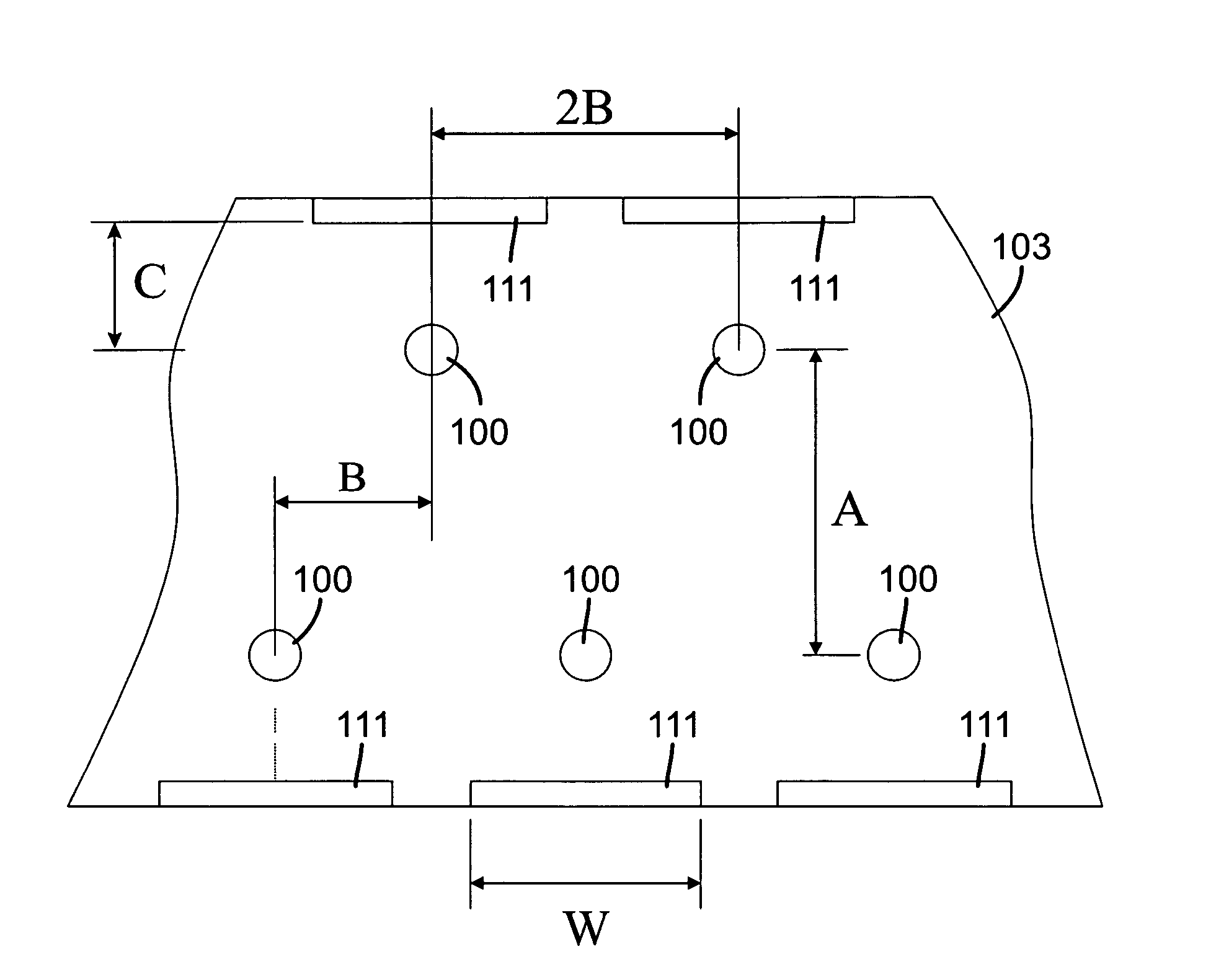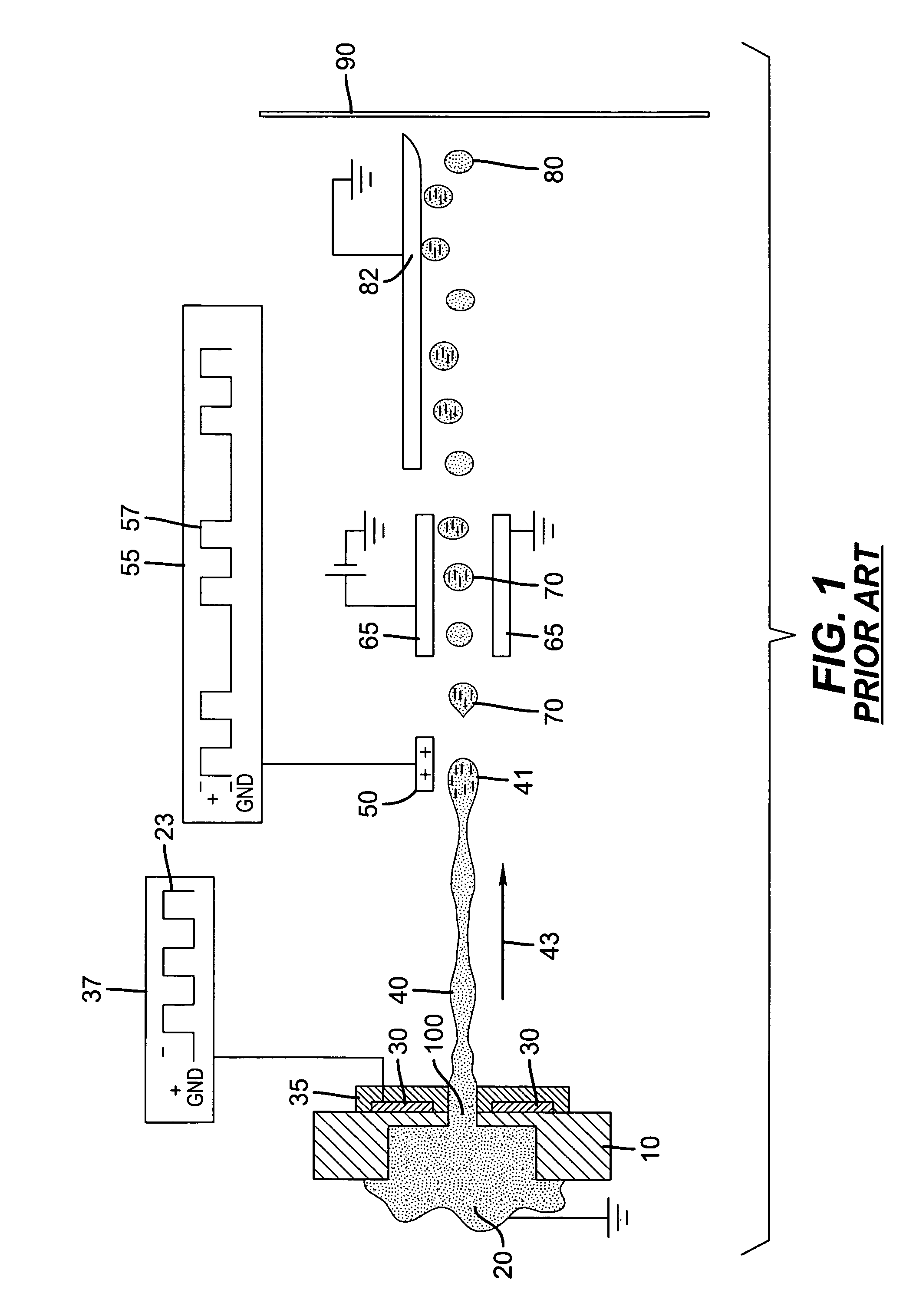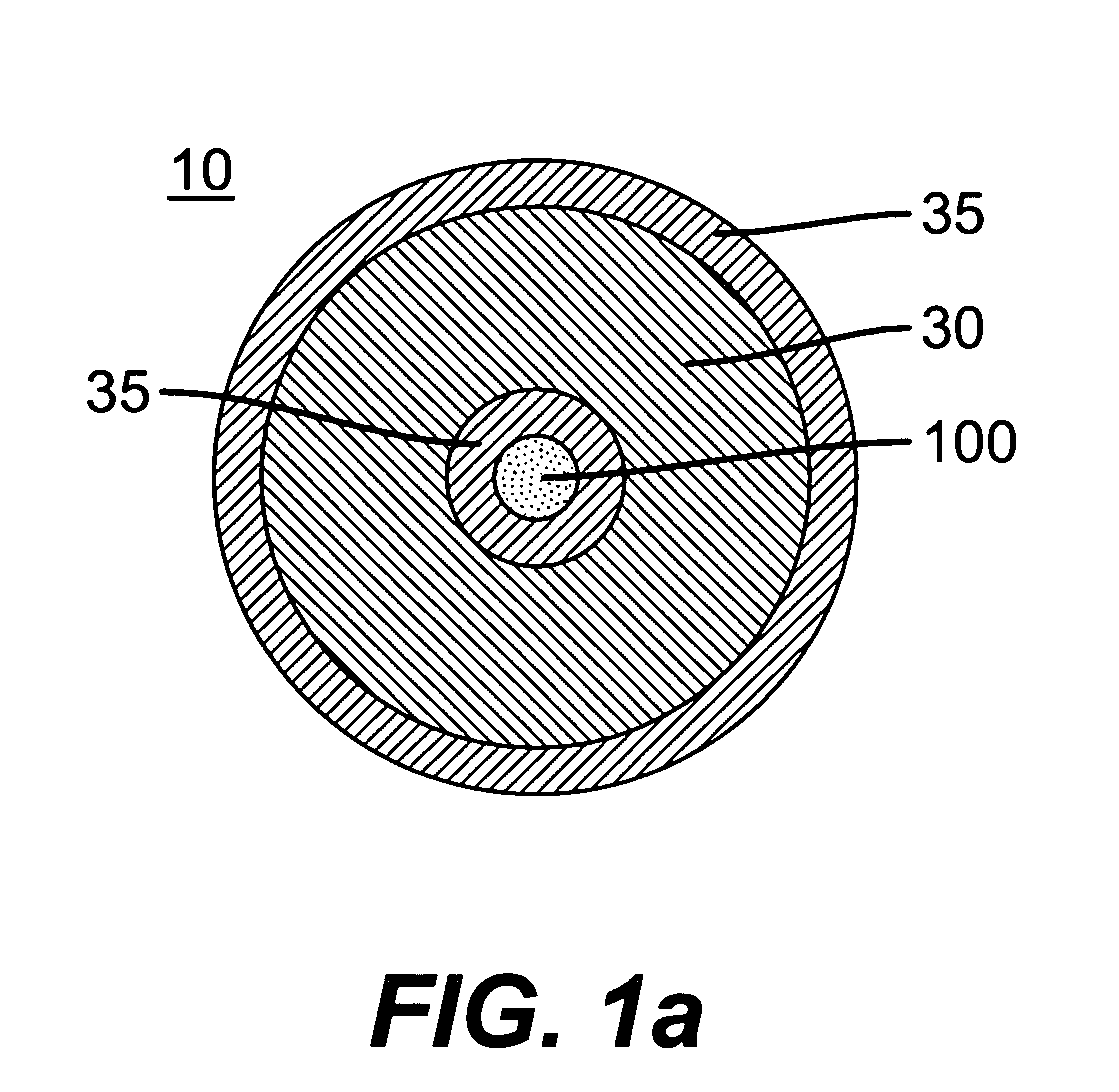Apparatus and method for electrostatically charging fluid drops
a technology of electrostatic charging and fluid drop, which is applied in the field of fluid inkjet printing, can solve the problems of inability to use high-resolution (500 dpi or greater) electrostatic inkjet systems, high-resolution versions of continuous inkjet printers, and inability to accurately place tubes or channels into support structures
- Summary
- Abstract
- Description
- Claims
- Application Information
AI Technical Summary
Benefits of technology
Problems solved by technology
Method used
Image
Examples
Embodiment Construction
[0063]FIG. 1 shows a conventional prior art electrostatic continuous inkjet (CIJ) printer used to excite a continuous jet of conductive fluid into a stream of drops. Fluid manifold 10 contains conductive fluid 20 that is forced under pressure through nozzle 100 in the form of a jet 40 that is emitted in jetting direction 43. Conductive fluid 20 is grounded or otherwise connected through an electrical pathway. Jet 40 can be stimulated in a variety of ways to produce a corresponding stream of drops. These stimulation methods can include vibrating nozzle 100. Alternatively, a second stimulation method involves electrohydrodynamically (EHD) exciting jet 40 with an EHD exciter. A third technique, which has frequently been employed in the prior art, is to impose a pressure variation on the fluid in the nozzle 100 by means of a piezoelectric transducer placed typically within a cavity feeding the nozzle. In the prior art system shown in FIG. 1, an EHD stimulation electrode 30 is employed. ...
PUM
 Login to View More
Login to View More Abstract
Description
Claims
Application Information
 Login to View More
Login to View More - R&D
- Intellectual Property
- Life Sciences
- Materials
- Tech Scout
- Unparalleled Data Quality
- Higher Quality Content
- 60% Fewer Hallucinations
Browse by: Latest US Patents, China's latest patents, Technical Efficacy Thesaurus, Application Domain, Technology Topic, Popular Technical Reports.
© 2025 PatSnap. All rights reserved.Legal|Privacy policy|Modern Slavery Act Transparency Statement|Sitemap|About US| Contact US: help@patsnap.com



